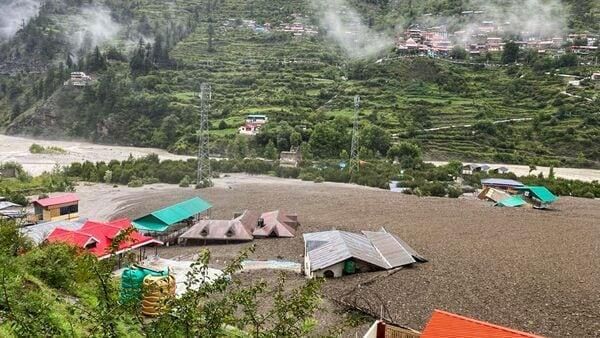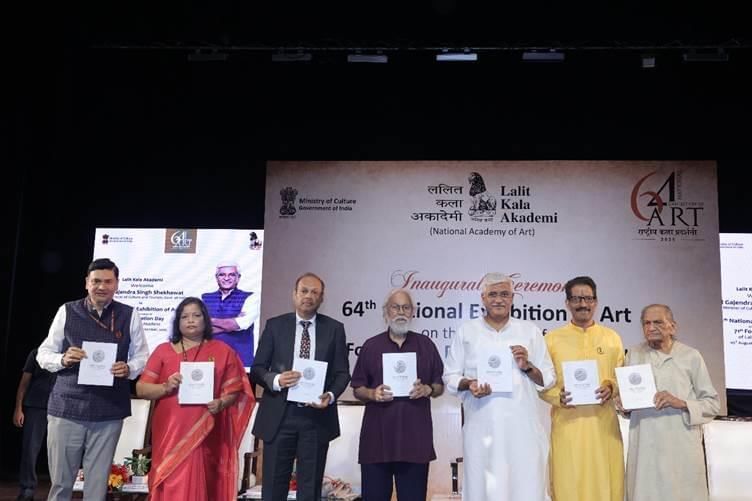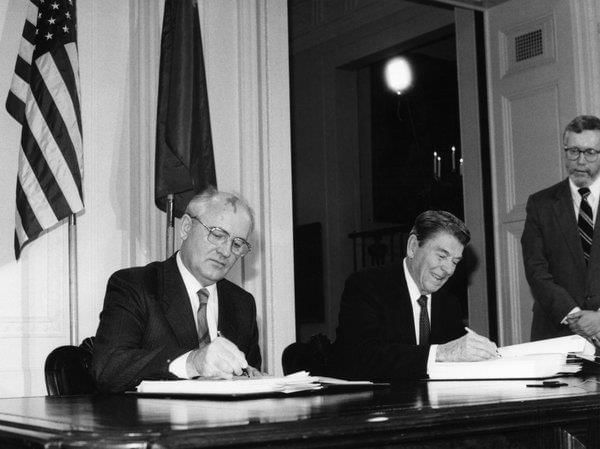UPSC Daily Current Affairs: 6th August 2025 | Current Affairs & Hindu Analysis: Daily, Weekly & Monthly PDF Download
GS3/Economy
Assets Under Management (AUM)
Why in News?
India's Mutual Fund (MF) industry has experienced remarkable growth, with Assets Under Management (AUM) reaching ₹74.40 lakh crore as of June 2025. This marks a sevenfold increase over the past decade, reflecting significant progress in the financial sector.
Key Takeaways
- Exponential growth in AUM indicates a healthy investment environment.
- Professional fund management plays a crucial role in investment strategies.
Additional Details
- Definition of AUM: AUM refers to the total market value of financial assets (stocks, bonds, etc.) managed by an investment firm on behalf of its clients.
- Growth Drivers:Key factors contributing to the increase in AUM include:
- Net investor inflows and redemptions
- Market performance
- Dividend reinvestments
- Importance of AUM:AUM is significant as it:
- Indicates the size of the fund and investor confidence.
- Reflects the performance and popularity of fund managers.
- Enhances liquidity and facilitates better portfolio diversification.
- Affects management fees and establishes minimum investment limits.
- What is a Mutual Fund? A mutual fund is an investment vehicle that pools money from multiple investors to create a diversified portfolio, managed by professional fund managers to optimize risk and return.
- Unit-Based Investment: Investors buy units of the fund; the value of each unit is known as the Net Asset Value (NAV), which fluctuates based on market conditions.
Classification of Mutual Funds
- Based on Asset Class:
- Equity Funds: Invest primarily in stocks and can include large-cap, mid-cap, and small-cap funds.
- Debt Funds: Focus on bonds and fixed-income instruments.
- Hybrid Funds: Combine equity and debt investments for balanced risk-return.
- Based on Investment Objective:
- Growth Funds: Target long-term capital appreciation.
- Income Funds: Seek regular income through dividends and bond investments.
- Liquid Funds: Invest in short-term debt instruments, offering low risk and high liquidity.
- Tax-saving Funds (Equity Linked Savings Scheme): Provide tax benefits under Section 80C with a focus on equity.
- Pension Funds: Designed for retirement savings with a long-term return focus.
- Based on Structure:
- Open-ended Funds: Allow investors to enter or exit at any time, thus providing high liquidity.
- Closed-ended Funds: Have a fixed maturity period; investments can only be made during the initial offer.
- Interval Funds: Permit purchases and redemptions at specified intervals only.
In conclusion, the surge in India's Mutual Fund AUM signifies a robust investment climate and highlights the growing participation of investors in the financial market, facilitated by professional fund management and diverse investment options.
Consider the following statements:
- I. India accounts for a very large portion of all equity option contracts traded globally, thus exhibiting a great boom.
- II. India’s stock market has grown rapidly in the recent past, even overtaking Hong Kong’s at some point in time.
- III. There is no regulatory body either to warn small investors about the risks of options trading or to act on unregistered financial advisors in this regard.
Which of the statements given above are correct?
- (a) I and II only
- (b) II and III only
- (c) I and III only
- (d) I, II and III
GS2/Governance
What is Ayurveda Aahara?
Why in News?
The Food Safety and Standards Authority of India (FSSAI) and the Ministry of Ayush have recently published an official list of food items categorized under Ayurveda Aahara, aimed at harmonizing ancient Indian dietary practices with contemporary nutritional standards.
Key Takeaways
- Ayurveda Aahara focuses on food products that adhere to Ayurvedic dietary principles, promoting balance, seasonality, and natural ingredients.
- The initiative aims to standardize Ayurvedic food practices, ensuring safety and fostering consumer trust.
Additional Details
- Definition: Ayurveda Aahara refers to food products that are based on Ayurvedic dietary principles, emphasizing a holistic approach to nutrition that includes balance and seasonality.
- Objective: The primary goal is to ensure the standardization, safety, and reliability of Ayurvedic dietary practices.
- Legal Framework: These food items are regulated under the Ayurveda Aahara Regulations (2022) established by the FSSAI.
- Textual Basis: The product list is derived from classical Ayurvedic texts and must adhere to traditional recipes and preparation methods.
- New Product Inclusion: Food Business Operators (FBOs) can propose new items by referencing authoritative sources from Ayurveda.
- Institutional Support: The initiative is backed by the National Institute of Ayurveda, and the Ayush Aahara Compendium provides scientifically validated formulations for the industry.
- Significance: Ayurveda Aahara supports preventive health, digestion, and immunity, while also reviving India's cultural heritage associated with ancient food traditions.
In summary, Ayurveda Aahara represents a significant step towards integrating traditional Indian diets with modern nutrition, enhancing public health while preserving cultural heritage.
GS2/Polity
Tackling Money Laundering
 Why in News?
Why in News?
Since 2015, the Enforcement Directorate (ED) has initiated 5,892 cases under the Prevention of Money Laundering Act (PMLA), 2002, but has achieved only 15 convictions, as reported by the Finance Minister in the Rajya Sabha. This low conviction rate highlights the challenges in securing successful prosecutions and indicates the government's struggle to effectively combat rising money laundering cases.
Key Takeaways
- Low conviction rate (15 out of 5,892 cases) raises concerns about the effectiveness of the PMLA.
- Increase in money laundering cases signals inadequacies in enforcement and prevention measures.
Additional Details
- Laundromats: Initially used by organized crime syndicates as fronts for illegal earnings, laundromats in finance refer to vehicles that facilitate the laundering of crime proceeds by obscuring ownership and moving money illicitly.
- Process of Money Laundering:The process involves three main stages:
- Placement: Introduction of illicit money into the financial system, often broken into smaller amounts through "smurfing".
- Layering: Moving funds through various transactions to conceal their origins.
- Integration: Reintroducing laundered money into the economy via real estate or businesses.
- The PMLA was established to align with international standards set by the UN, allowing for the confiscation of properties linked to crime.
- Legal Framework: The Act shifts the burden of proof onto the accused, and an Enforcement Case Information Report (ECIR) is sufficient to initiate proceedings without a First Information Report (FIR).
- Despite stringent provisions, widespread money laundering persists, raising serious enforcement challenges.
- Recent rulings, such as in Vijay Madanlal Chaudhury vs. Union of India (2022), highlight loopholes in the Act that can be exploited for political motives.
- It is critical to adhere to Financial Action Task Force (FATF) guidelines to prevent misuse and ensure effective enforcement against money laundering, which is linked to terror financing.
- India's Double Taxation Avoidance Agreements (DTAA) with approximately 85 countries aim to enhance international cooperation in addressing money laundering, but stronger implementation is necessary.
In conclusion, while the PMLA aims to combat money laundering effectively, the rising number of cases and low conviction rates underscore the need for improved enforcement mechanisms and adherence to international standards.
GS2/Governance
The Technocratic Calculus of India’s Welfare State
Why in News?
India is experiencing a significant shift in its welfare governance, moving from traditional rights-based models to a more technocratic, data-centric approach. This transformation is marked by widespread Aadhaar enrollment, the integration of numerous schemes into the Direct Benefit Transfer (DBT) system, and the rise of digital grievance platforms, fundamentally changing the delivery and experience of social welfare.
Key Takeaways
- The shift towards a technocratic governance model raises questions about the essence and purpose of welfare.
- The digitization of welfare aims to improve efficiency and reach but may undermine democratic values.
- Political polarization often drives leaders to rely on data-driven systems for policy decisions.
Additional Details
- Technocratic Governance: This approach emphasizes measurable and auditable state rationality, often sidelining political challenges and democratic dialogue.
- Impact on Social Spending: Social sector spending in India has decreased, affecting critical areas such as minorities, labor, nutrition, and social security.
- The Right to Information (RTI) framework is under strain, leading to a decline in transparency and accountability.
- Centralized Systems: While they improve complaint management, they risk reducing accountability and create algorithmic barriers to oversight.
To create a more democratic and resilient welfare system, it is essential to integrate local knowledge and participatory institutions, empowering citizens rather than reducing them to mere data points. As India seeks to balance efficiency with justice and accountability, it must reorient its technological advancements to enhance democratic participation and safeguard the rights of all citizens.
GS2/Polity
PAHAL (Direct Benefit Transfer for LPG) Scheme
Why in News?
The Indian government has recently deactivated over 4 crore duplicate or inactive domestic LPG connections under its PAHAL direct benefit transfer scheme, ensuring better efficiency and transparency in subsidy distribution.
Key Takeaways
- The PAHAL scheme is India’s initiative for direct benefit transfer of LPG subsidies.
- It covers more than 17 crore LPG consumers, making it the largest cash transfer program in the world.
Additional Details
- About PAHAL: The scheme, officially known as Pratyaksh Hanstantarit Labh, allows consumers to pay the full market price for LPG cylinders, with the government subsequently transferring the subsidy amount directly to the consumer's registered bank account.
- Objectives: The main goals of the PAHAL scheme include ensuring transparency, eliminating intermediaries, preventing diversion of subsidies, protecting consumer entitlements, improving LPG availability for genuine users, and removing fake or duplicate connections.
- Eligibility Criteria: Applicants must be LPG users with a combined taxable income (including spouse) not exceeding ₹10,00,000 in the previous financial year, as per the Income Tax Act, 1961.
- How it Works: Consumers book a gas cylinder at market price. Upon delivery, the government credits the subsidy amount directly to the consumer's linked bank account.
- Consumer Categories:There are two types of consumers in the scheme:
- Primary Aadhaar-Based DBT: Aadhaar is linked with both the LPG consumer number and the bank account.
- Alternative (Non-Aadhaar-Based): Bank account is linked with the LPG consumer number when Aadhaar linking is not available.
This scheme represents a significant step towards efficient subsidy distribution and aims to strengthen the integrity of the LPG subsidy process.
GS3/Science and Technology
Leap-1 Mission Overview
Why in News?
Dhruva Space, an emerging space technology startup based in India, is on the verge of launching its inaugural commercial satellite mission named LEAP-1.
Key Takeaways
- LEAP-1 is Dhruva Space's first commercial satellite mission.
- The mission will carry payloads focused on artificial intelligence (AI) and Earth observation.
- Utilizes the indigenous P-30 satellite platform, which was successfully space-qualified during the LEAP-TD mission on ISRO's PSLV-C58 in January 2024.
- Developed in collaboration with Australia-based companies Akula Tech and Esper Satellites.
Additional Details
- Nexus-01: This payload includes an advanced artificial intelligence (AI) module, which offers remarkable on-orbit intelligence. It features onboard data processing and capabilities for AI/ML model re-training, enabling rapid insights in near-real-time.
- The AI module supports applications such as fire detection and spectral analysis, continually improving through live sensor data retraining.
- Esper Satellites’ OTR-2 mission: This mission is equipped with a state-of-the-art hyperspectral imager that produces exceptionally rich Earth observation data, accessible via their EarthTones API, thus raising the bar for remote sensing technology.
- The combination of these payloads enhances capabilities across diverse fields, including defense, disaster response, agriculture, mining, and environmental monitoring.
This mission signifies a leap forward in combining advanced technologies for various significant applications, reflecting the potential of Indian space technology on the global stage.
GS3/Environment
Flash Floods in Uttarkashi
 Why in News?
Why in News?
Recently, flash floods and mudslides devastated Dharali village in Uttarkashi, Uttarakhand, resulting in the tragic loss of at least four lives. The disaster damaged numerous buildings, shops, and hotels in the area. Unlike typical cloudbursts that often trigger flash floods in Uttarakhand's hilly regions, this incident was primarily caused by sustained heavy rainfall over three consecutive days.
Key Takeaways
- Uttarkashi's topography is vulnerable to landslides, exacerbating the effects of heavy rainfall.
- Flash floods can result from rapid rainfall, unlike regular floods, which develop more gradually.
- Climate change is believed to intensify rainfall patterns, increasing the risk of such disasters.
Additional Details
- Topography of Uttarkashi: The district ranges from 800 to 6,900 metres above sea level, characterized by rugged terrain, high ridges, and deep gorges. It is home to crucial water sources for the Ganga and Yamuna rivers.
- Rainfall Patterns: Uttarkashi receives an average annual rainfall of 1,289 mm, with the southwest monsoon from June to September contributing the most, particularly in southern areas.
- Flash Flood Characteristics: Defined as sudden and intense floods occurring within a short time frame, flash floods differ from regular floods by their rapid onset, usually within minutes or hours.
- Impact of Continuous Rainfall: The combination of ongoing rainfall and the fragile topography of Uttarkashi can trigger destructive mudslides and debris flows.
- Glacial Lake Outburst Floods (GLOFs): Satellite imagery indicates the presence of large glaciers and glacial lakes above the affected area, with experts suspecting a possible glacier burst contributing to the flooding.
- Cloudburst Clarification: The India Meteorological Department (IMD) defines a cloudburst as requiring 100 mm of rain within an hour over a small area. During the recent incident, only 2.7 mm was recorded in 24 hours, indicating this was not a cloudburst event.
The increasing frequency of such severe weather events highlights the urgent need for effective disaster management strategies, improved infrastructure, and proactive interventions to mitigate risks associated with climate change.
GS1/History & Culture
Lalit Kala Akademi and the 64th National Exhibition of Art
 Why in News?
Why in News?
The 64th National Exhibition of Art (NEA), organized by the Lalit Kala Akademi, was recently inaugurated in New Delhi, marking a significant event in the Indian art scene.
Key Takeaways
- The exhibition showcases visual art advancements in India.
- Lalit Kala Akademi was established to promote understanding of Indian art.
- The Akademi has regional centers across various cities in India.
Additional Details
- Lalit Kala Akademi: Established on 5th August 1954 by the Government of India, it serves as an autonomous body aimed at promoting and propagating Indian art both domestically and internationally.
- Statutory Authority: Gained status under the Societies Registration Act 1860 in 1957, further solidifying its role in the art community.
- Funding: The Akademi is funded by the Ministry of Culture, which supports its various initiatives.
- Mission: It aims to identify, showcase, and preserve a permanent collection of contemporary, modern, folk, and tribal art from India.
- The NEA is recognized as the most prestigious annual event of the Akademi, beginning in 1955.
This year's exhibition emphasizes artist empowerment and showcases the rich tapestry of Indian visual art, reflecting the Akademi's longstanding commitment to cultural exchange and development.
GS2/International Relations
Intermediate-Range Nuclear Forces (INF) Treaty
 Why in News?
Why in News?
Russia has announced that it no longer considers itself obligated by the Intermediate-Range Nuclear Forces (INF) Treaty, a significant development in international arms control.
Key Takeaways
- The INF Treaty was signed in 1987 between the United States and the Soviet Union (now Russia).
- Its primary objective was to eliminate two specific categories of missile systems to mitigate the nuclear arms race.
- Both nations agreed to dismantle an entire class of ground-launched missiles with ranges from 500 to 5,500 kilometers.
- Verification measures included on-site inspections, leading to the destruction of 2,619 missiles over three years.
- The U.S. withdrew from the treaty, citing violations by Russia.
Additional Details
- Background: The need for the INF Treaty was driven by a significant buildup of missiles by both superpowers in Europe, posing a threat to continental security.
- Key Leaders: The treaty was finalized during the tenures of U.S. President Ronald Reagan and Soviet leader Mikhail Gorbachev.
- The INF Treaty marked a major milestone in arms control, fostering a period of reduced tensions between the two nations.
In conclusion, the dissolution of Russia's commitment to the INF Treaty could lead to increased tensions and a potential arms race, highlighting the need for renewed diplomatic efforts in nuclear disarmament.
GS2/International Relations
India-Philippines Strategic Partnership: Defence, Trade, and Maritime Cooperation
Why in News?
India and the Philippines have strengthened their bilateral relations, elevating them to a strategic partnership during President Ferdinand Marcos Jr.’s first visit to India. This partnership primarily focuses on enhancing defence collaboration, maritime cooperation, and trade relations.
Key Takeaways
- The Philippines and India established diplomatic relations in 1949.
- Bilateral trade surpassed USD 3 billion for the first time in 2022-23 and reached USD 3.53 billion in 2023-24.
- Defence cooperation has become a key element, highlighted by India's sale of BrahMos missiles to the Philippines.
- Both nations have committed to doubling bilateral trade by 2030.
- People-to-people engagement has been emphasized through scholarships and youth exchange programs.
Additional Details
- Historical Background: India and the Philippines share a history of engagement rooted in democratic values and anti-colonial legacies, evolving steadily over decades.
- Trade and Economic Cooperation: A trade agreement signed in 1979 paved the way for increased bilateral trade, which has grown significantly since the late 1990s due to India's Look East Policy. Major exports from India include engineering goods and pharmaceuticals, while imports from the Philippines comprise semiconductors and electrical machinery.
- Defence and Maritime Cooperation: India's defence exports to the Philippines began with a significant USD 375 million deal for BrahMos missiles, marking a pivotal shift in military collaboration amid regional maritime security concerns.
- People-to-People Engagement: The enhancement of educational ties through ITEC scholarships aims to foster closer relations between the two nations.
The recent visit signifies a transformational moment in India-Philippines relations, with both leaders expressing strong commitments to regional peace and stability, particularly in the context of a free and open Indo-Pacific. President Marcos hailed India as an "indispensable partner," while Prime Minister Modi acknowledged the Philippines' trust in Indian defence capabilities.
GS3/Environment
Rhisotope Project
Why in News?
The University of the Witwatersrand in South Africa, with the support of the International Atomic Energy Agency (IAEA), has initiated the Rhisotope Project to address the pressing issue of rhino poaching.
Key Takeaways
- Launch Date: The project concept began in 2021 and was formally launched in July 2024.
- Primary Objective: To prevent rhino poaching by making rhino horns traceable and unsuitable for illegal trade.
- Pilot Site: The Waterberg Biosphere Reserve in South Africa is the designated pilot location.
- Implementation: 20 rhinos have been injected with a radioisotope (specific isotope details are undisclosed) as part of the testing phase.
How the Isotope Tagging Works?
- Isotope Basics: The project utilizes radioactive isotopes that emit detectable radiation during their decay process.
- Injection Method: A small hole is drilled into the rhino's horn to safely insert a low dose of the isotope.
- Detection Mechanism: Radiation Portal Monitors at ports can identify tagged horns, even within 40-foot containers, as demonstrated through tests using 3D-printed horn simulations.
Significance
- Safety Assurance: No harm to rhinos has been observed; cytological tests confirm no cellular or physiological damage.
- Impact on Illegal Trade: The tagged horns will become detectable and toxic for illegal human consumption, significantly mitigating the poaching issue.
This innovative approach aims not only to protect rhinos but also to disrupt the illegal trade of rhino horns, making it a critical development in wildlife conservation.
UPSC 2019 Question: Consider the following statements:
- 1. Asiatic lion is naturally found in India only.
- 2. Double-humped camel is naturally found in India only.
- 3. One-horned rhinoceros is naturally found in India only.
Which of the statements given above is / are correct?
- (a) 1 only
- (b) 2 only
- (c) 1 and 3 only
- (d) 1, 2 and 3
GS3/Defence & Security
Defence Acquisition Council (DAC) Overview
Why in News?
The Defence Acquisition Council (DAC) has recently approved several procurement proposals amounting to nearly ₹67,000 crore aimed at enhancing the military preparedness of the nation.
Key Takeaways
- The DAC is the highest decision-making authority in the Defence Ministry concerning procurement.
- Its primary goal is to ensure swift procurement of the armed forces' requirements while optimizing budgetary resources.
Additional Details
- Formation: The DAC was established following the recommendations of the Group of Ministers on 'Reforming the National Security System' in 2001, after the Kargil War in 1999.
- Composition:
- Chairman: Ministry of Defence
- Members include the Minister of State for Defence, Chief of Defence Staff (CDS), and chiefs of the Army, Navy, and Air Force.
- Additional members include the Defence Secretary and various secretaries from the Defence Ministry.
- Functions:
- The DAC provides in-principle approval for a 15-year Long Term Integrated Perspective Plan (LTIPP) for the armed forces.
- It assesses and categorizes acquisition proposals into 'Buy', 'Buy & Make', and 'Make'.
- It addresses issues related to single vendor clearance and makes decisions on 'offset' provisions for proposals above ₹300 crore.
- It also oversees the transfer of technology under the 'Buy & Make' category and conducts field trial evaluations.
The DAC's recent approval of procurement proposals signifies a strategic move to bolster the country's defense capabilities, ensuring that the armed forces are well-equipped to meet emerging challenges.
|
44 videos|5271 docs|1113 tests
|
FAQs on UPSC Daily Current Affairs: 6th August 2025 - Current Affairs & Hindu Analysis: Daily, Weekly & Monthly
| 1. What is the concept of Ayurveda Aahara and how does it relate to health? |  |
| 2. How does the PAHAL scheme function in terms of Direct Benefit Transfer? |  |
| 3. What are the primary objectives of India-Philippines strategic partnership in defense and trade? |  |
| 4. What were the key implications of the Intermediate-Range Nuclear Forces (INF) Treaty? |  |
| 5. What measures can be taken to tackle money laundering effectively? |  |





















